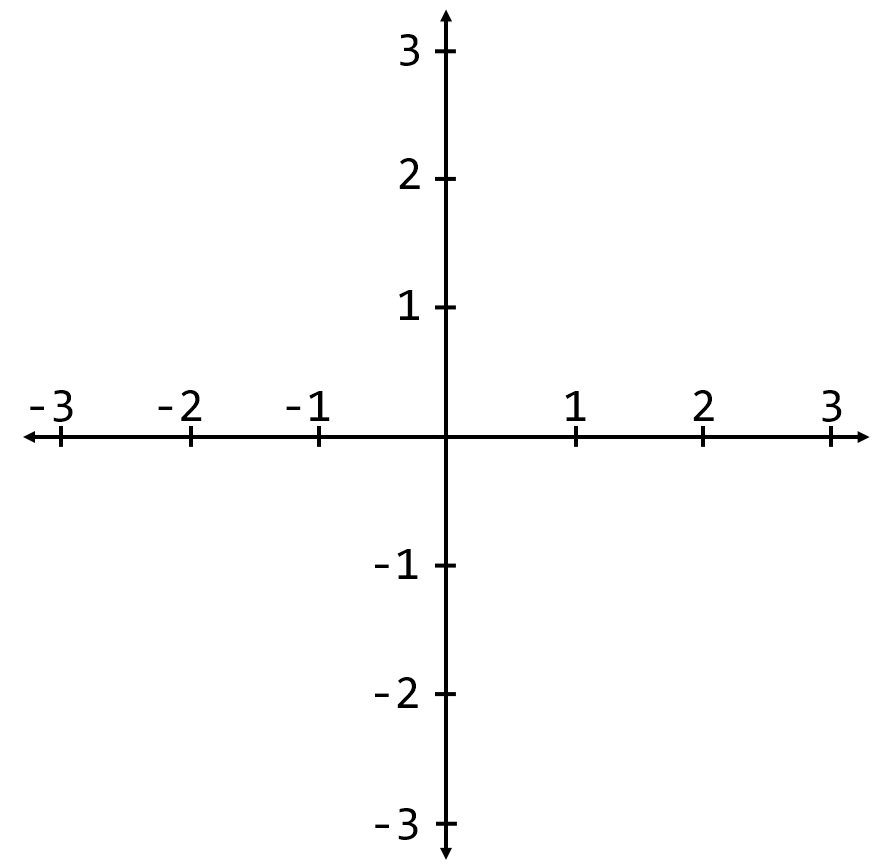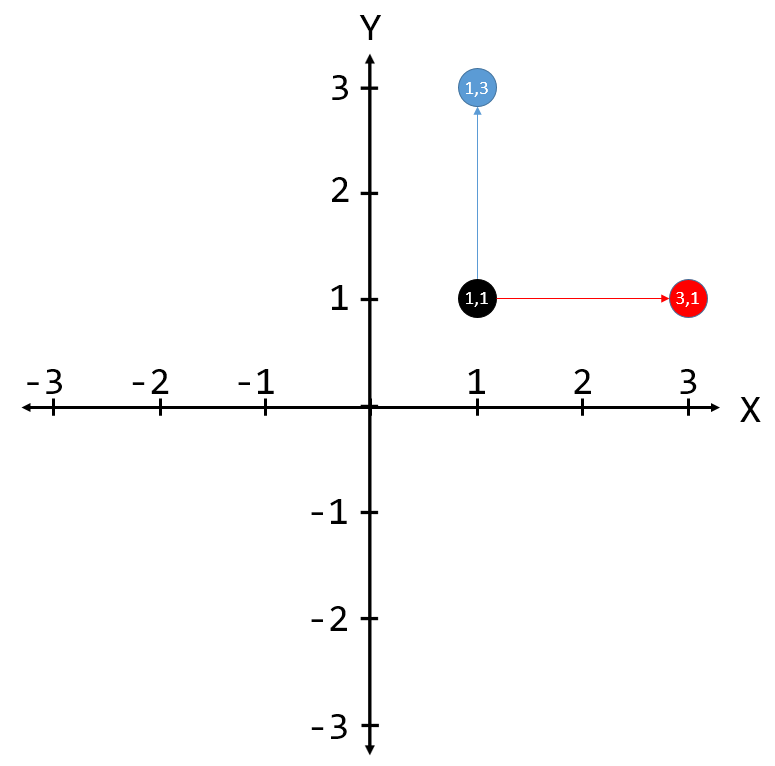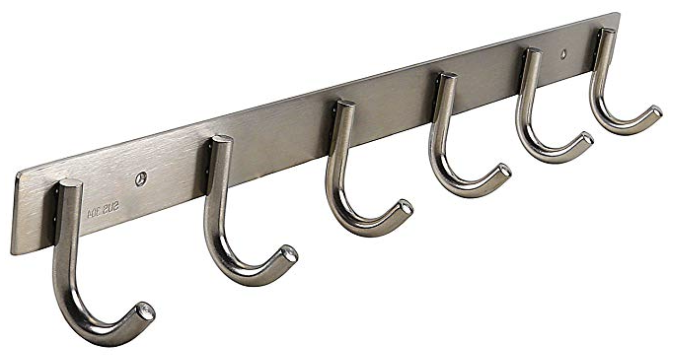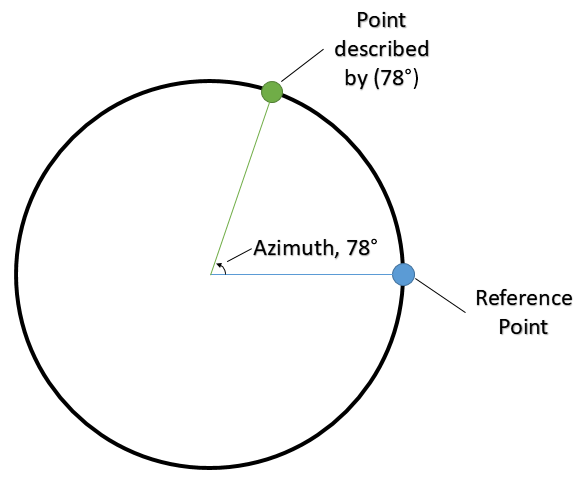I’ve written about the fundamental dimensions, but what is a dimensions anyway?
Aaron’s Informal Definition of “Dimension”
👉 A dimension is a domain in which a point can exist and can be moved within.
That’s really as complex as it needs to get.
Dimensional Multiplicity
Singular
The simplest dimension is a line. We often visualize that with something like this:

A line is called “one-dimensional” because it takes one coordinate to describe a location within it.
By the way, a “coordinate” is the specification of a location in a given dimension. I realize at this point, that’s a bit of a circular definition. Deal with it.
Higher Dimensions
Although many measurements are one-dimensional (e.g. length, or weight), life wouldn’t be very interesting in one dimension. There can be more!
A two-dimensional space is called a “plane”. A plane is like the top of a table. It’s two number lines crossed together.

It’s useful to name dimensions. In math we usually call the first two dimensions the “X” and “Y” dimension. X goes side to side. Y goes up and down. You can remember that because the bottom part of the Y goes up and down.
A three-dimensional space is called a “volume”. We usually call this the “Z” dimension. It can’t properly be represented on a screen1 (because screens are two-dimensional).
Orthogonality
What separates dimensions is the concept of “orthogonality”. Basically, if you can move in your space without changing one of the coordinates that define your position, you are moving orthogonally to that dimension.

The black circle exists at point (1,1). It can move anywhere on the blue line and its X coordinate will still be “1”. It can be moved anywhere on the red line and its Y coordinate will still be “1”. These lines are orthogonal. They are separate dimensions.
On paper, or on a screen, orthogonal lines intersect at 90° angles. There are other means of orthogonality, though. For example, your weight and body temperature have nothing to do with each other. They are orthogonal dimensions.
Continuous vs Discrete
Dimensions can be continuous or discrete.
A continuous dimension has infinitely many points of infinitely small size. There is no limit to the smallest distance that separates adjacent points on a continuous dimension and a thing may exist at ANY of those points. A continuous dimension is like a rod you can hang your shirt on.

You can hang your shirt in infinitely many spaces on that rod.
A discrete dimension may or may not have infinitely many points. There IS a minimum distance between two adjacent points. Nothing exists between two adjacent points in a discrete dimension. A thing may only exist in certain, specific spots in a discrete dimension. Instead of a rod, a discrete dimension is more like a row of hooks.

There are only six places to hang your shirt. You can’t hang your shirt in the air between two hooks. It would fall.
Three Dimensions in a 2D Space
While it is not possible to actually represent 3-dimensional continuous spaces on a screen, it IS possible to represent 3-dimensional non-infinite, discrete spaces on a screen.

You can actually represent an arbitrary number of dimensions using this sort of “boxing” method.
Other Coordinate Systems
I said that a line is a one-dimensional space. That is true, but it isn’t really the ONLY one-dimensional space.

A circle can also be a one-dimensional space, depending on what coordinate system you’re using. You can specify an exact spot on a circle using only one number, such as the angle between that point and known reference point.

The term for the angle that describes a location is “azimuth”, which would make a great name for a Dungeons and Dragons character. Circles are one-dimensional in the spherical and _cylindrical_coordinate systems.
Much like lines and circles, two-dimensional spaces don’t have to be planes. They can be cylinders or spheres, depending on what coordinate system you choose to use to describe them. One very well-known two-dimensional coordinate system is the spherical coordinate system of longitude and latitude.

Practical Dimensionality
Practically speaking, there really isn’t any restriction on what a dimension has to look like. Anything in which a specific point can be absolutely referred to via a single coordinate is can be called a dimension. You can’t visualize 4:03PM, but that is a specific coordinate in the time dimension. If you step off your beach towel and walk a meandering path all around a beach, I can refer to an exact footstep by referring to what number the step was. Your first step off may have been south. Your second step may have been east. Doesn’t matter, each step could be referred to as a discrete point in the theoretical “walk on the beach” dimension.
Dimensions are neat.
Summary
- A dimension is a space in which a thing can exist and move
- One-dimensional spaces are called lines
- One-dimensional measurement: length
- Two-dimensional spaces are called planes
- Two-dimensional measurement: length & width
- Three-dimensions spaces are called volumes
- Three-dimensional measurement: length, width, & height
- Orthogonality is what separates dimensions
- Dimensions can be continuous or discrete
- Other coordinate systems exist & can be useful
Footnotes
-
I disprove this later, using a technicality. Pedantry. ↩